 |
King of Chemicals Manufacturers |
Specifications, Properties, Uses, SDS of Adipic Acid USP NF BP Ph Eur EP IP FCC Food Grade Manufacturer Supplier Exporter Wholesale & Small Packs, CAS Number 124-04-9. |
|
| King of Chemicals has several associated companies having accreditations like cGMP, GLP - FDA Approved Good Manufacturing Practice and Good Laboratory Practice of WHO standard, ISO-9001, ISO-14001, ISO/IEC 17025, ISO ISO-45000, HACCP, FSSC 220000, FSSAI, "REACH" Registered, Kosher & Halal Certified. e-CTD and DMF support can be made available if needed. We offer USP NF BP Ph Eur EP IP JP Analytical Reagent FCC Food Grade Chemicals & Nutraceuticals. | |
        |
|
Muby Chem Pvt. Ltd. is a several decades old group of companies, engaged in manufacturing, supplying, distributing, wholesale supplies of Adipic Acid USP NF BP Ph Eur EP IP FCC Food Grade for actual users, including retail or small pack supplies for research and development work.
We supply fine and speciality chemicals, pharmaceutical excipients, mineral fortifiers in chemically pure, analytical reagent grade, IP BP USP Ph Eur EP JP and other pharmaceutical grade monograph including FCC Food grade chemicals and Nutraceuticals at best prices. We and/or our associated units have all the facilities to supply as per cGMP standard observing good manufacturing practice and good laboratory practice. We can assure low microbial count and also offer a test certificate for the same. We maintain warehouses across USA, India, and UAE. Our group exports to USA, Canada, Mexico, Argentina, Brazil, Chile, Korea, Malaysia, Thailand, Indonesia, Europe, and several other parts of the world. We supply in wholesale container loads to small pack of few grams. Solid products may be specified for it size and shape as desired by the buyer.


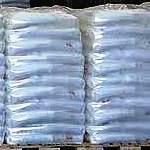
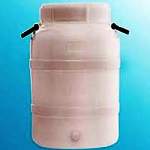
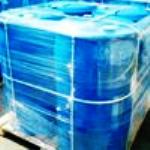
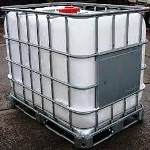
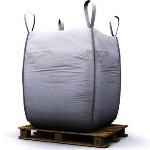
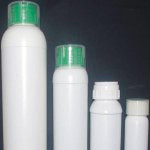
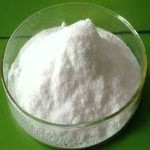
Adipic Acid CAS Number 124-04-9
For Properties Specifications Uses of Adipic Acid Click Properties, Specifications, Uses, Price, Process of Adipic Acid Manufacturer.
For For SDS MSDS Sheet of Adipic Acid Click SDS Safety Data Sheet MSDS Sheet of Adipic Acid Manufacturer.
The Properties, Specifications, Monograph and Uses of Adipic Acid:
Adipic Acid or hexanedioic acid is the organic compound with the formula (CH2)4(COOH)2. Adipic acid otherwise rarely occurs in nature, but it is known as manufactured E number food additive E355. Adipic acid has been incorporated into controlled-release formulation matrix tablets to obtain pH-independent release for both weakly basic and weakly acidic drugs. significant amounts of adipic acid are used as a food ingredient as a flavorant and gelling aid.
Adipic Acid USP NF Grade Specifications
C6H10O4 --- 146.1
Hexanedioic acid.
1,4-Butanedicarboxylic acid [CAS 124-04-9].
Adipic Acid contains not less than 99.0 percent and not more than 101.0 percent of C6H10O4, calculated on the dried basis.
Identification: Infrared Absorption 197K .
Melting range: between 151C and 154C.
Loss on drying: Dry it at 105C to constant weight: it loses not more than 0.2% of its weight.
Residue on ignition: not more than 0.1%.
Limit of nitrates: To pass the test
Chloride: A 5-mL portion of the Test solution from the Limit of nitrates test shows no more chloride than a corresponding 0.14-mL portion of 0.020 N hydrochloric acid: the limit is 0.02%.
Sulfate: A 5-mL portion of the Test solution from the Limit of nitrates test shows no more sulfate than a corresponding 0.26-mL portion of 0.020 N sulfuric acid: the limit is 0.05%.
Iron: Use a 10-mL portion of the Test solution from the Limit of nitrates test: the limit is 0.001%.
Heavy metals: 0.001%.
Assay: Dissolve 60 mg of Adipic Acid in 50 mL of water. Add 0.2 mL of PhPh, and titrate with 0.1 N sodium hydroxide to a permanent pale pink endpoint. Each mL of 0.1 N sodium hydroxide is equivalent to 7.31 mg of C6H10O4.
Adipic Acid BP Ph Eur Grade Specifications
Ph Eur
C6H10O4 --- 146.1 --- CAS 124-04-9
Action and use: Excipient.
DEFINITION
Hexanedioic acid.
Content: 99.0 per cent to 101.0 per cent (dried substance).
CHARACTERS
Appearance: White or almost white, crystalline powder.
Solubility: Sparingly soluble in water, soluble in boiling water, freely soluble in alcohol and in methanol, soluble in acetone.
IDENTIFICATION
A. Melting point (2.2.14): 151C to 154C.
B. Infrared absorption spectrophotometry.
TESTS
Solution S: Dissolve 5.0 g with heating in distilled water and dilute to 50 ml with the same solvent. Allow to cool and to crystallise. Filter through a sintered-glass filter (40). Wash the filter with distilled water. Collect the filtrate and the washings until a volume of 50 ml is obtained.
Appearance of solution: The solution is clear and colourless.
Dissolve 1.0 g in methanol R and dilute to 20 ml with the same solvent.
Related substances: Liquid chromatography To pass the test.
Chlorides: Maximum 200 ppm.
Nitrates: Maximum 30 ppm.
Sulphates: Maximum 500 ppm.
Iron: Maximum 10 ppm.
Heavy metals: Maximum 10 ppm.
Loss on drying: Maximum 0.2 per cent, determined on 1.000 g by drying in an oven at 105C.
Sulphated ash: Maximum 0.1 per cent.
ASSAY
Dissolve 60.0 mg in 50 ml of water. Add 0.2 ml of PhPh solution and titrate with 0.1 M sodium hydroxide. 1 ml of 0.1 M sodium hydroxide is equivalent to 7.31 mg of C6H10O4.
IMPURITIES
HO2C-R
A. R = CH2-CO2H: pentanedioic acid (glutaric acid),
B. R = CO2H: butanedioic acid (succinic acid),
C. R = [CH2]3-CO2H: heptanedioic acid (pimelic acid).
Adipic Acid FCC Food Grade Specifications
Hexanedioic Acid; 1,4-Butanedicarboxylic Acid
HOOC(CH2)4COOH
C6H10O4 Formula weight 146.14
INS: 355 CAS 124-04-9
DESCRIPTION
Adipic Acid occurs as white crystals or a crystalline powder. It is not hygroscopic. It is freely soluble in alcohol, soluble in acetone, and slightly soluble in water.
Function: Buffer; neutralizing agent.
REQUIREMENTS
Assay: Not less than 99.6% and not more than 101.0% of C6H10O4, calculated on the anhydrous basis.
Lead: Not more than 2 mg/kg.
Melting Range: Between 151.5° and 154°.
Residue on Ignition: Not more than 0.002%.
Water: Not more than 0.2%.
We also manufacture EP IP Grade of Adipic Acid.
The MSDS-SDS Hazard Statement of Adipic Acid:
Adipic Acid SDS, Safety Data Sheet
MSDS Sheet, Material Safety Data Sheet 18-March-25
SECTION 1. PRODUCT IDENTIFICATION
Product Name & Other Names: Adipic Acid or Hexanedioic acid.
CAS Number: 124-04-9
EINECS EC Number: 204-673-3
Relevant uses and uses advised against (if any): Industrial Manufacturing.
SECTION 2. HAZARDS IDENTIFICATION
GHS, Globally Harmonized System Classification in accordance with 29 CFR 1910
Classification according to Regulation (EC) No 1272/2008
Serious eye damage (Category 1)
Labeling according to GHS USA & Regulation (EC) No 1272/2008
GHS Label Elements 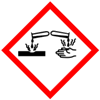 Corrosive |
Signal Words: Danger
Hazard statements:
H318: Causes serious eye damage.
Precautionary statements:
P261: Avoid breathing dust/ fume/ gas/ mist/ vapors/ spray.
P262: Do not get in eyes, on skin, or on clothing.
P264 Wash skin thoroughly after handling.
P280: Wear protective gloves/protective clothing/eye protection/face protection.
P305+P351+P338: IF IN EYES: Rinse cautiously with water for several minutes. Remove contact lenses, if present and easy to do. Continue rinsing.
SECTION 3. COMPOSITION / INFORMATION ON INGREDIENTS
Product Identity: Adipic Acid or Hexanedioic acid.
CAS Number: 124-04-9
EINECS EC Number: 204-673-3
SECTION 4. FIRST AID MEASURES
Always seek medical attention after first aid measures are provided.
Eye Contact: Do not allow victim to rub eye (s). Let the eye (s) water naturally for a few minutes. If particle/dust does not dislodge, flush with lukewarm, gently flowing water for 5 minutes or until particle/dust is removed, while holding eyelid (s) open. If irritation persists, obtain medical attention. DO NOT attempt to manually remove anything stuck to the eye.
Skin Contact: Remove contaminated clothing, shoes and leather goods (e.g. watchbands, belts). Quickly and gently blot or brush away excess chemical. Wash gently and thoroughly with lukewarm gently flowing water and non-abrasive soap for 5 minutes. If irritation persists, repeat flushing. Obtain medical advice.
Inhalation: If symptoms are experienced, remove source of contamination or move victim to fresh air. Obtain medical advice.
Ingestion: Never give anything by mouth if victim is rapidly losing consciousness or is unconscious or convulsing. Have victim rinse mouth thoroughly with water.
SECTION 5. FIRE FIGHTING MEASURES
Fire and Explosion Hazards: Not considered flammable but may burn at high temperatures. Airborne dusts of this product in an enclosed space and in the presence of an ignition source may constitute an explosion hazard.
Extinguishing Media: Use means of extinction appropriate for the surrounding fire conditions such as water spray, carbon dioxide, dry chemical, or foam.
Fire Fighting: Apart from oxides of carbon. toxic fumes may result from combustion. As with any fire, fire fighters should be fully trained and wear full protective clothing including an approved, self-contained breathing apparatus which supplies a positive air pressure within a full-face piece mask. Use water spray to cool unopened containers.
SECTION 6. ACCIDENTAL RELEASE MEASURES
Personal precautions, protective equipment and emergency procedures: Avoid breathing dust/fumes/gas/mist/vapors/spray. Use individual protective equipment (waterproof boots, suitable protective clothing, safety glasses, etc.). Restrict unprotected personnel from the area. Prevent any contact with hot surfaces. Do not approach facing the wind. Close-fitting safety goggles may be necessary in some circumstances to prevent eye contact.
Environmental precautions: Do not let the product enter drains, soil or water sources.
Methods and materials used for containment Cleanup procedures and Storage: Contain spilled material. Contain spill, isolate hazard area, and deny entry. Sweep up or vacuum. Place contaminated material in suitable, labeled containers for final disposal. Dispose of waste material consistent with the requirements of waste disposal authorities.
SECTION 7. HANDLING AND STORAGE
Precautions for safe handling: Apply according to good manufacturing and industrial hygiene practices. Ensure proper ventilation. Wash thoroughly after handling. Do not drink, eat or smoke while handling. Avoid contact with skin, eyes and clothing. Minimize dust generation. Avoid breathing dust/fumes/gas/mist/vapors/spray. Keep container tightly closed. Avoid ingestion and inhalation. Use individual protective equipment (waterproof boots, suitable protective clothing, safety glasses, etc.).
Conditions for safe storage, including any incompatibilities: Store in cool, dry and ventilated area away from heat sources and protected from sunlight in tightly closed original container. Keep air contact to a minimum. Do not leave the material container open. Store protected from heat, sparks and ignition sources and incompatible materials. Avoid contact with skin and eyes. Avoid inhalation of dust/mist/vapor. Do not store with incompatible materials like oxidizing agents, strong reducing agents and bases. Keep away from sources of ignition. Take measures to prevent the build-up of electrostatic charge. It is good practice to keep container closed when not in use. May form combustible dust concentrations in air. Use care during processing to minimize generation of dust. Good housekeeping is important to prevent accumulations of dust.
SECTION 8. EXPOSURE CONTROLS / PERSONAL PROTECTION
Protective Clothing: The hazard potential is low. Where there is large scale use of this material and significant potential for worker contact, gloves and long-sleeved work clothes or disposable coveralls may be necessary. Eye protection should be worn where dust is generated and there is a potential that eye contact may occur. Ensure that eyewash stations and safety showers are close to the workstation location. Do not breathe dust.
Ventilation: Use adequate local or general ventilation where necessary to maintain the concentrations of dust well below the recommended occupational exposure limits for general Particulates, Not Otherwise Specified (PNOS).
Respirators: Where dust or fumes are generated and cannot be controlled to within acceptable levels by engineering means, use appropriate NIOSH-approved respiratory protection equipment.
Exposure limit(s): Contains no substances with occupational exposure limit values in some countries. Better go by 5 mg/m3 TLV ACGIH.
SECTION 9. PHYSICAL AND CHEMICAL PROPERTIES
Appearance: It is a white, odorless granules crystals or powder
Odor: None
Odor threshold: Not applicable.
pH: 2.5 to 4
Relative density: 1.36
Freezing/Melting Point/Range: 151C to 154C
Boiling Point: Decomposes at 337C
Flash point: No data found.
Auto-ignition temperature: No data found.
Decomposition temperature: No data found.
Upper/lower flammability or explosive limits: No data found.
Vapor pressure: No data found.
Vapor density: No data found.
Evaporation rate: No data found.
Flammability (solid, gas): No data found.
Partition coefficient: n-octanol/water: No data found.
Solubility in Water: Soluble in water.
Viscosity: No data found.
SECTION 10. STABILITY AND REACTIVITY
Stability and Reactivity: Stable and not considered reactive under normal temperatures and pressures. Hazardous polymerization or runaway reactions will not occur.
Incompatibilities: Oxidizing agents. Avoid excessive heat, spark, flame, ignition dust formation and electrical charging. Also avoid strong reducing agents and bases.
Hazardous Decomposition Products: High temperature will generate carbon oxide and fumes.
SECTION 11. TOXICOLOGICAL INFORMATION
Acute Toxicity:
LD50 Oral - Rat - male and female - 5,560 mg/kg
LC0 Inhalation - Rat - male and female - 4 h - > 7.7 mg/l
LD0 Dermal - Rabbit - male and female - 7,940 mg/kg
Carcinogenicity: IARC: No component of this product present at levels greater than or equal to 0.1% is identified as probable, possible or confirmed human carcinogen by IARC.
Reproductive toxicity: No data found.
Teratogenicity: No data found.
Mutagenicity: No data found.
SECTION 12. ECOLOGICAL INFORMATION
Eco toxicological data:
Toxicity to fish: static test LC0 - Brachydanio rerio (zebrafish) - >= 1,000 mg/l - 96 h.
Toxicity to daphnia and other aquatic invertebrates: Immobilization LC50 - Daphnia magna (Water flea) - 46 mg/l - 48 h.
Mobility in soil: Soluble in water and hence likely to be mobile.
Persistence: Unlikely to persist due to water solubility.
Results of PBT and vPvB assessment: This substance/mixture contains no components considered to be either persistent, bioaccumulative and toxic (PBT), or very persistent and very bioaccumulative (vPvB) at levels of 0.1% or higher.
SECTION 13. DISPOSAL CONSIDERATIONS
Do not wash the material down drain. Put uncontaminated material back into the process if possible. Place contaminated material in suitable, labeled containers for disposal.
SECTION 14. TRANSPORT INFORMATION
Land Transport DOT USA, TDG Canada & ADR/RID Europe: Not regulated.
Sea Transport IMO/IMDG: Not regulated.
Air Transport ICAO/IATA: Not regulated.
SECTION 15. REGULATORY INFORMATION
USA:
SARA 311/312 Hazards: See section 2.
California Prop. 65 Components: Not listed.
SECTION 16 - ADDITIONAL INFORMATION
European Labeling in Accordance with EC Directives
H318: Causes serious eye damage.
DISCLAIMER: The information and recommendations set forth herein are presented in good faith and believed correct as of the date hereof. It is compiled from various sources, and it is not necessarily all inclusive nor fully adequate in every circumstance. In addition, these suggestions should not be confused with nor followed in violation of applicable laws, regulations, rules, or insurance requirements applicable. This SDS MSDS sheet is intended only as a guide to the appropriate precautionary handling of the material by a professionally trained person using this product. Individuals receiving the information must exercise their independent judgment in determining its appropriateness for a particular purpose. This shall not constitute a guarantee for any specific product features and shall not establish a legally valid contractual relationship. In no case shall our company be liable to loss or damages by the product user.

Adipic Acid Manufacturers, Suppliers, Exporters, Wholesalers:
King of Chemicals manufacturers

Plot No. 2900/46&47 + 2900/163to167, GIDC, Ankleshwar, Dist. Bharuch, India
India, USA, UAE
TEL: (Office) 91-22-23774610, 91-22-23723564
e-mail: info@kingofchemicals.com
Copyright and Usual Disclaimer is Applicable --- March 18, 2025
If I give you “My Word” Nobody can undo it.
If I sign an “Agreement” my Lawyer will undo it
Our products are for industrial and laboratory use only. The user must test the material before use. We are not dispensing chemists or druggist and do not offer over the counter type (OTC) products for medical use by individuals.
We and our associates manufacture pure chemicals surpassing Monograph Specifications of Analytical Reagent Standards, British & European Pharmacopoeia BP Ph Eur EP Standard, US Pharmacopoeia USP NF Standard, Indian Pharmacopoeia IP Standard, Japan Pharmacopoeia JP Standard, FCC Food Grade Standard. |
|